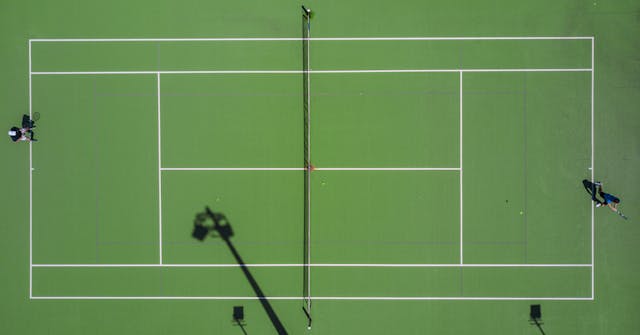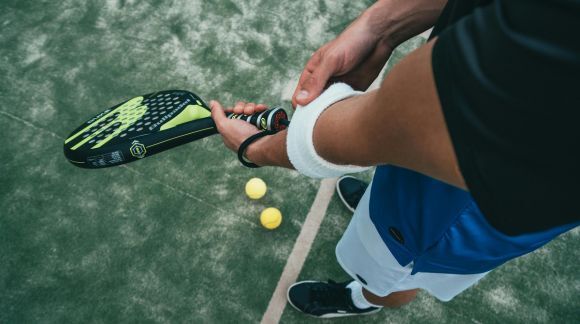Padel is more popular than ever. More and more people are hitting the padel court to see if this sport is for them, and because of the high demand, more and more courts are being built. So, there's a good chance you'll play padel too, and that's why we're happy to explain the rules of padel. How does padel work? What are the rules of padel according to the Royal Dutch Tennis Association (KNLTB), and are you allowed to throw your racket over the net? You can find answers to these questions and more about the rules of padel in this article.
How do you play padel?
Padel is played on, you guessed it, a padel court. Such a court consists of two halves, separated by a net, just like in tennis. What's also similar to tennis is that the court is divided into two service areas and a back court. However, there's a significant difference when comparing a padel court to a tennis court. The padel court is much smaller and is surrounded by glass walls and fences. Padel is typically played with two people against two others. In some cases, though not often seen, a one-on-one variant also occurs.
Rules of padel: scoring
Also important when considering the rules of padel is the scoring system used in this sport. The scoring is the same as in tennis, going from 15 to 30 to 40, after which the game can be won. If the score is 40-40 (or deuce), you must score two points in a row to win the game. You win a set if you win six games faster than your opponent. However, you only win if you have two games ahead of your opponent: 6-5 isn't enough. If the score is 6-6 in games, a tiebreak follows. During such a tiebreak, according to both tennis and padel rules, you play to seven points, again requiring you to win by at least two points. If you win the tiebreak, you still win the set at 7-6.
How does serving work in padel?
The rules of padel service differ from those of tennis. While you serve from behind the line and must ensure the ball is played diagonally into the opponent's service box, the action is almost the opposite of what you're used to in tennis. Padel rules dictate that you let the ball bounce before serving it into the opponent's service box. This is not done overhand, as in tennis, but underhand. Furthermore, after bouncing on the floor, the ball must not rise above the server's navel before being hit.
Just like in tennis, you start serving from right to left and alternate serving sides, so you serve the second point from left to right, and so on. If your first serve goes out, you have a second chance (the second serve). If your first serve goes via the net and then in, you have two attempts to get it right. If the first serve goes into the net and then out, the KNLTB padel rules stipulate that you only have one second chance. If you serve incorrectly twice, the point goes to the opponent. Good to know: the service is in when the ball bounces against the glass. If the ball hits the fence after the service, it's out!
How does the bouncing against the glass and fence work?
During the rally, you can, of course, choose whether to let the ball bounce before returning it, or to go for the volley. Another option is to let the ball bounce against the glass or fence after it bounces, and then return it. If the ball hits the fence or glass without bouncing first, the ball is out of bounds, and the point goes to the opponent. You can also use the glass in another way. How? After the ball has bounced once, you can return it off your own walls. If you play the ball off your own walls when it hasn't bounced yet—or has bounced more than once—the point goes to the opponent.
Can you throw your racket over the net in padel?
It's a frequently asked question: are you allowed to use your racket over the net in padel? The answer is clear: no. However, there is one exception to this rule. If the ball has bounced in your own half of the court first, you are allowed to use your racket over the net. However, you must never touch the net. If you do, the point goes to your opponent. It's also good to know that both the forehand and backhand strokes in padel are played slightly differently than in tennis. For example, topspin is more difficult in padel than in tennis, because the padel racket isn't as well-suited for it. While you often see the backhand played with two hands in tennis, the backhand in padel is often played with one hand. Once you start practicing, you'll quickly discover what feels best for you.
Shop the most comfortable padel clothing before you start playing!
Do you now have an idea of how padel works and what its rules are? Then it's time to start practicing! Of course, you'll need the right padel clothing that not only looks great but is also comfortable. You've come to the right place at Sjeng Sports. Whether you're looking for men's or women's clothing , we have outfits that are not only of the highest quality but also make you feel incredibly comfortable.
More stories



